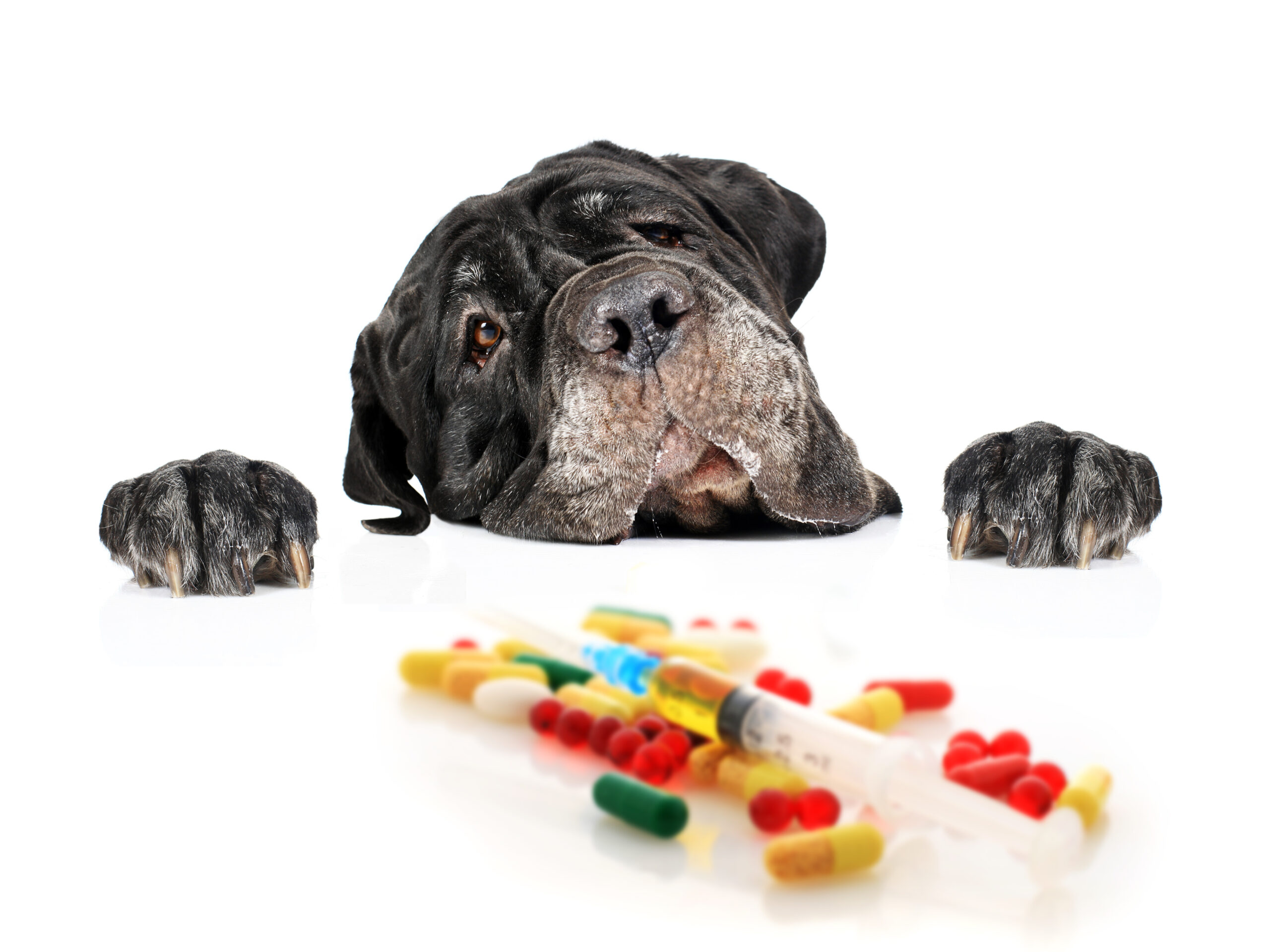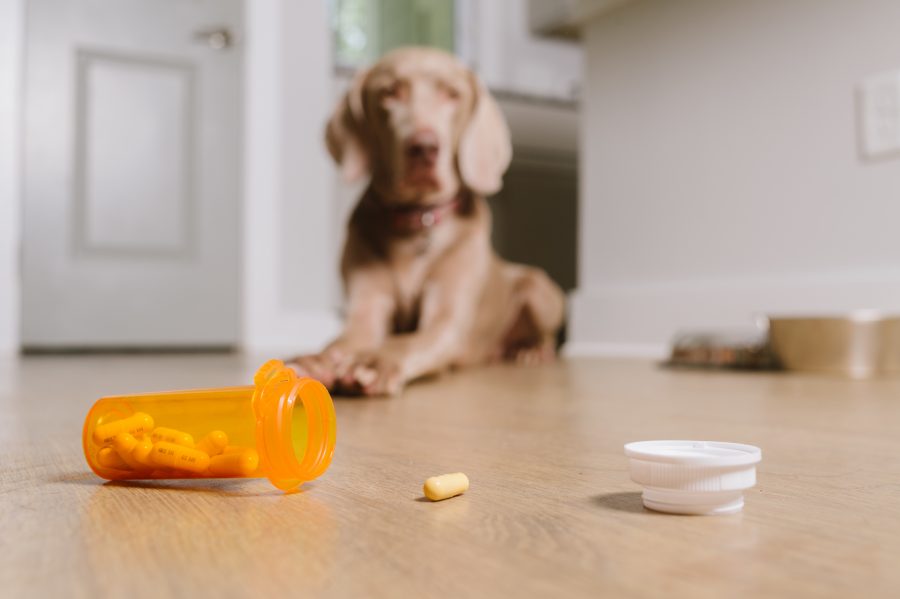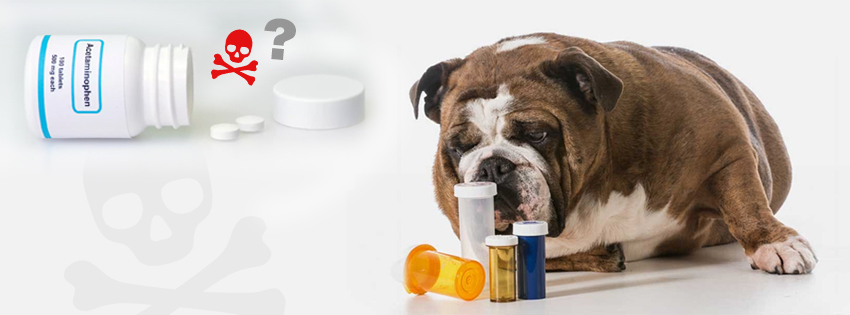Acetaminophen Toxicity in Dogs
Is acetaminophen toxic to dogs?
Acetaminophen, a common human drug used to control pain and fever, is toxic in dogs. Unfortunately, this is relatively common toxicity. Dogs may get into the owner’s medications or owners may try to treat their dog’s pain at home. Acetaminophen is occasionally recommended by veterinarians and should only be given under their direction. Young and small dogs have a higher risk for toxicity.

What are the signs of acetaminophen toxicity in dogs?
Signs of toxicity from acetaminophen may develop within 1-4 hours of ingestion. Acetaminophen can cause liver damage or decrease the red blood cell’s ability to carry oxygen (methemoglobinemia).
Dogs may become depressed or weak, with rapid breathing, a high heart rate, panting, abdominal pain, vomiting or drooling. Affected dogs may also stop eating.
Their mucous membranes, such as the gums or tissue around the globe of the eye, may develop a bluish color called cyanosis. These areas may also develop a chocolate brown color from the methemoglobin (which cannot carry oxygen to the tissues). Some dogs develop swelling in the face, paws, and forelimbs several hours after ingesting acetaminophen.

Is there any treatment for a dog who is experiencing acetaminophen toxicity?
Early decontamination and treatment decrease the risk for serious toxicity. If acetaminophen ingestion occurred within a few hours of treatment, the veterinarian may induce vomiting. Once vomiting is controlled, activated charcoal may be administered. This can decrease absorption of acetaminophen by the gastrointestinal tract. Activated charcoal should only be given by a veterinarian. Otherwise, aspiration into the lungs and life-threatening changes in sodium levels can occur.
Depending upon the dose ingested, hospitalization may be needed. Fluids may be given under the skin or intravenously. An antidote is available for acetaminophen toxicity called N-acetylcysteine. Other medications, such as liver protectants and vitamin C, may also be given.
If liver damage occurs or methemoglobin levels in the blood rise rapidly, more intensive treatment is needed. These changes increase the risk for long term effects or even death. Patients that develop a low red blood cell count (anemia), or a decreased ability of the red blood cells to carry oxygen (methemoglobinemia) may require oxygen supplementation or a blood transfusion. Patients with liver damage can have an increased chance of bleeding. These patients may need vitamin K or plasma transfusions. They may also need dextrose in their fluids to keep blood glucose levels stable.




